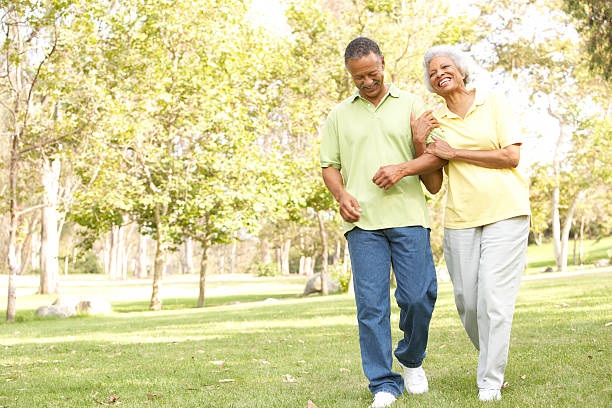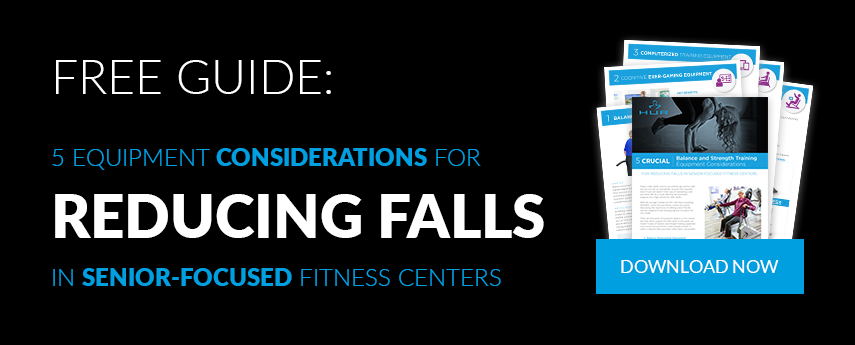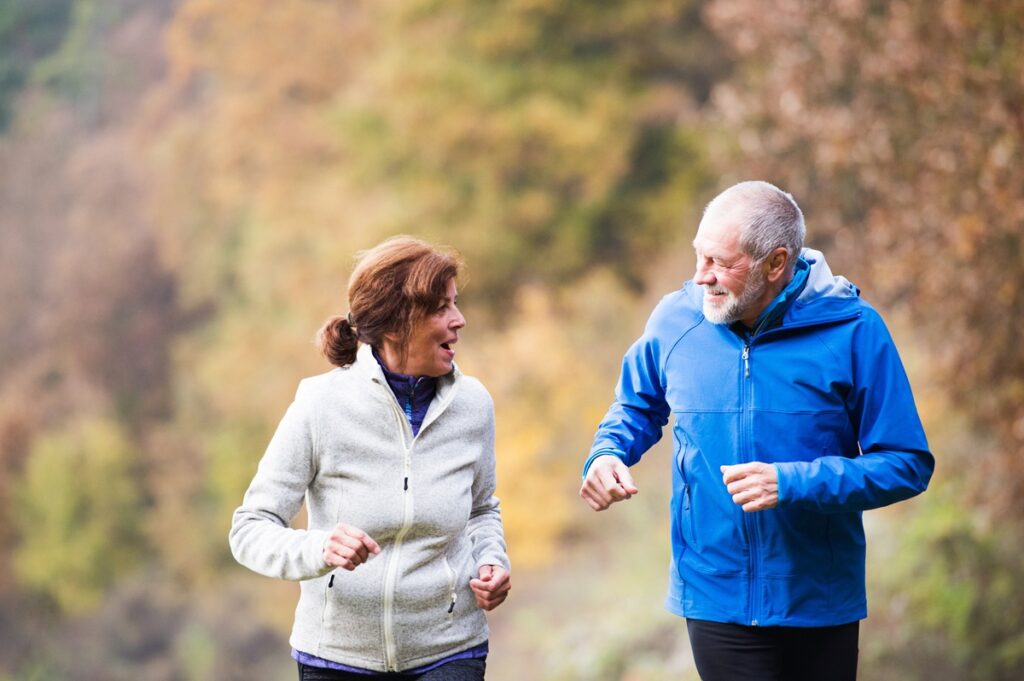Why Walking Speed is Important as We Age and How to Improve It
For most of us, gait speed - a measure of how quickly one can walk within a quantified distance – begins to decline after the age of 65. This is also true for other measures in how we walk and move through our daily lives. Our steps become less coordinated and not quite as stable as they once were.
This is important because walking is a key physical performance indicator, predicting overall health and life expectancy for people of all ages - but especially for older adults.
Walking is a complex task that requires the coordinated functioning of multiple systems.
As such, it’s considered a robust indicator of health status. Individuals with slow gait speeds tend to be at a higher risk for injury, cognitive impairment, and falls. This makes sense, of course. Walking and other lower body movements are fundamental actions in daily life. Limited mobility threatens independence and quality of life and can lead to a cycle of frailty that’s difficult to get out of.
In a 2011 meta-analysis that pooled data from 9 separate studies following a total of 34,000 seniors, gait speed consistently predicted life expectancy regardless of age, sex, injury, and illness. Why? Because how well we walk is a key indicator of our present state of overall health and functional abilities.
Individuals with a healthy gait (higher walking speed) generally exhibit healthier behaviors, lower cardiovascular risk, and lower levels of inflammatory markers.
Why Does Gait Speed Decline as We Age?
#1. Poor posture.
The backbone (vertebral column) is made up of bones (vertebra), joint-like spaces (intervertebral discs), and muscles. Age-related changes in bone density, muscle strength, and joint mobility have a pronounced effect on our entire spine and over time can cause our back to curve forward resulting in an increasingly stooped posture.
#2. Hips and legs become weaker.
Osteopenia and osteoporosis are medical terms that mean loss of bone density. As we age, our bones lose calcium, leading to a loss in bone density. In addition, with age comes a natural loss in muscle mass, a process called sarcopenia. Muscles shrink and may be replaced by fat and/or fibrous tissue either of which weakens the muscle.
#3. Loss of flexibility.
Flexibility is the ability of the muscles and tendons to lengthen and stretch in response to movement, allowing our joints to move through a full range of motion. In addition to being a necessary component to day-to-day life, maintaining good flexibility through stretching can reduce the symptoms of arthritis, relieve lower back pain, reduce the risk of falling, support good posture, and improve circulation.
Losses in flexibility lead to:
- Reduced coordination between upper and lower body movements
- Shorter stride length
- Less stability when maneuvering between elevation changes (example: stepping off of a curb, or climbing stairs)
- Decreased ability to quickly step over or avoid unexpected objects obstructing our path (example: a child’s ball rolls into our path)
#4 Vision and hearing loss.
Research shows that vision and hearing loss can have a significant effect on gait speed. Sensory impairment is associated with increased cognitive load, decreased executive functioning, and declines in overall physical performance that lead to slower gait speed.
#5.Declines in Cognitive Functioning.
We know that for goal-directed control of the body, a high level of cognitive functioning is required. Information must be processed by our prefrontal cortex, which in turn assigns meaning to the information and sends signals that allow us to respond. In older adults, we see this system slow down, slowing down our gait and putting us at risk for falls and injury. Walking is a complicated system of tasks that requires attention, executive functions, muscle strength, and memory. Breakdowns in these abilities create cyclical problems that are the antithesis of healthy, active aging.
#6. Dizzy Spells and Light-Headedness.
Dizziness and imbalance are one of the most common complaints among older adults. Various studies predict that between 25-30% of adults over the age of 70 experience regular dizzy spells. This percentage climbs to more than 50% after the age of 80.
The underlying causes of age-related dizziness vary but include declines in cognitive functioning, sensory impairment, low blood pressure, and medication side effects.
The Keys to Improving Gait Speed: Muscle Strength and Cognitive Functioning.
Building muscle strength
Research from the past decade has shown that resistance training improves measures of physical function and walking speed, even in older adults who are extremely frail or injured. Further research indicates that even in otherwise healthy seniors, resistance training focused on building lower body and core strength is one of the most effective ways to increase gait speed.
A study published in the Journal of Physiotherapy concluded that 12 weeks of high-intensity resistance and functional exercise can significantly improve temporal and spatial characteristics of gait for older adults in the beginning stages of dementia. Another study showed that 12-weeks of resistance training improved walking speed and balance among adults age 65 and older.
Increased Cognitive functioning
Neurological studies indicate that by late middle age, most people have begun to develop age-related holes or lesions in brain white matter, the material responsible for connecting and delivering messages between different regions of the brain. These lesions cause disruptions in the brain’s ability to transmit signals to the rest of the body, which has been shown to be a direct cause of gait disturbances.
Compounding the problem, brain metabolism also slows down with age. The brain is metabolically one of the most active of all organs in the body, consuming about one-fifth of total body oxygen utilization. However, as we age, our brains can become less efficient at metabolizing glucose, a condition associated with white matter atrophy – especially in areas of the brain that are involved in motor control. Understanding cerebral glucose metabolism in these brain regions is useful when designing interventional strategies to prevent gait speed declines.
The good news is that exercises that strengthen the mind-body connection have a profound effect on neural plasticity and the body’s ability to send signals back and forth between muscles and the brain.
Exergames, such as those performed on the Dividat Senso, are technology-driven physical activities, such as video games that require participants to be physically active to play the game. Rather than the use of a hand-held console, exergames require full-body movement to control the game.
One of the best things about virtual reality games is the ability to simulate a wide variety of circumstances while controlling for safety. Hiking through the Swiss alps might do the brain and body good – IF you are a trained mountaineer in great physical shape. For the rest of us, a Virtual Reality simulated hike is the next best thing because the brain treats it as if it is the real environment.
The Dividat Senso is a dual-tasking fall reduction and cognitive training platform designed to support independence. Think and move exergames are a fun and easy way to improve physical and cognitive function through interactive motor training activities and gaming.
To Improve Gait Speed, Walk more
Perhaps the most obvious way to increase gait speed is to spend more time walking. Consistent amounts of time spent walking will improve gait speed for most older adults – especially when combined with a strength training program.
Walking exercises for senior living centers should be made gradually more challenging to help seniors become more skillful. This allows them to develop their abilities to make easier adjustments to walking patterns and use less effort at the same time.
Ways to Increase Walking Challenges:
- Increase speed for short distances
- Change walking directions, sideways, backward, as well as forward stepping
- Practice while holding items
- Increase coordination by walking to the beat of music
- Improve agility with walking in circular patterns in both directions
“We don’t stop walking because we grow old, we grow old because we stop walking.”







